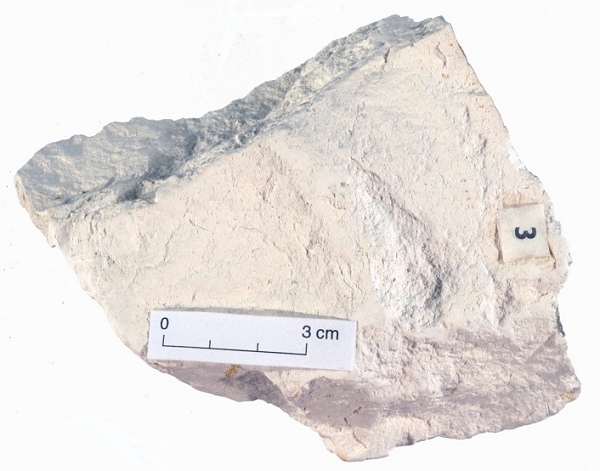
![]() Chalk; Cretaceous,
southern England
Chalk; Cretaceous,
southern England
Chalk is basically a soft white limestone. In fact, it is
made largely from the accumulation of calcium carbonate
platelets, the skeletons of microscopic plankton that lived
in the warm, shallow seas of the Late Cretaceous period.
These are so tiny that an electron microscope is needed to
study them. Chalk is usually very homogeneous, like the lump
in the photograph, but it commonly contains layers of flints
(chert nodules), and occasionally larger fossils such as sea
urchins and ammonites.